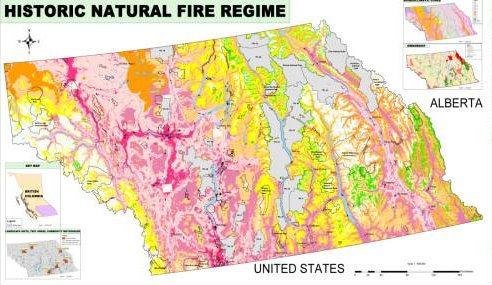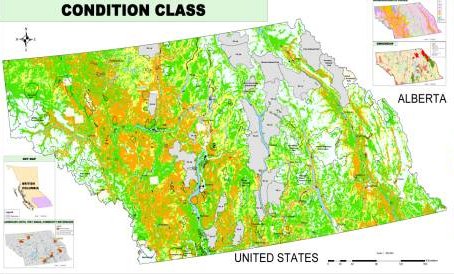Fuel Management
The fuel management project conducted with BA Blackwell and Associates comprised two major components: Historic Natural Fire Regime (HNFR) and Condition Class (CC).
The Historic Natural Fire Regime component was conducted to reclassify Southern British Columbia’s Natural Disturbance Types (NDT) to incorporate key information influencing fire hazard not included in the biogeoclimatic (BEC) groups, which currently form the basis of NDT classifications.

By assigning the slope, aspect and BEC groups a Historic Natural Fire Regime Classification, a more site-specific hazard rating can be assigned to each polygon. Each polygon in the study area received an HNFR rating ranging from 0-8 based on its BEC zone and the derived new aspect class, derived from a combination of slope and aspect.
The HNFR data can be used as a planning tool to determine where to focus resources in case of fire.
The Condition Class component of the project was conducted to determine with more accuracy how far from their natural patterns areas have deviated, due to human intervention by way of fire prevention.
Using the HNFR, as well as other factors including fuel type, disturbance history and selected stand attributes from the Forest Inventory Planning (FIP) database, a condition class was assigned to reflect how far an area has deviated from its natural condition. Areas with significant fuel build-up with higher potential to burn were assigned a higher condition class (3 on a scale of 0-3).

Using the condition class rating, the consequences of potential fires may be calculated to determine the costs associated with each fire, particularly in areas of urban interface, where insurance is of notable concern.
The condition class determination gives resource and urban planning managers another tool to evaluate the potential risk to timber and structural values within their planning areas. The areas identified as higher risk can then be managed more vigorously to mitigate the potential for destructive fires, and protect the important values in the region, be they water, wildlife, timber or property.
